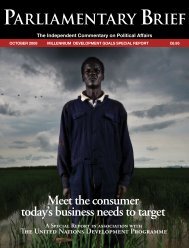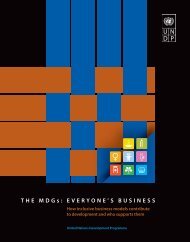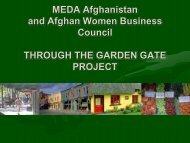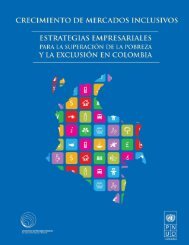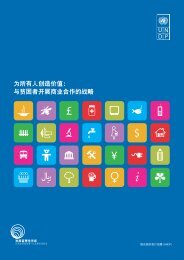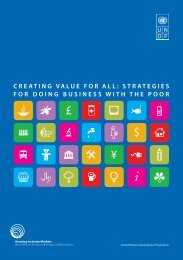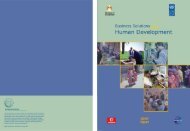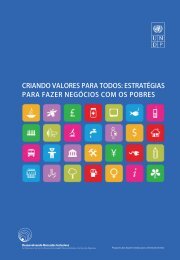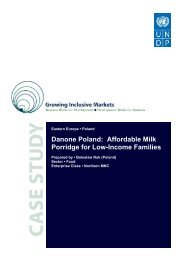Edipack: a Paper Recycling Pioneer - Growing Inclusive Markets
Edipack: a Paper Recycling Pioneer - Growing Inclusive Markets
Edipack: a Paper Recycling Pioneer - Growing Inclusive Markets
Create successful ePaper yourself
Turn your PDF publications into a flip-book with our unique Google optimized e-Paper software.
Business Model – Constraints and SolutionsStrategies<strong>Edipack</strong> faced several constraints in its business operations. Most of the constraints wereovercome by partnering with other actors, as stated in the previous section. The constraint ofrestricted access to finance, characterized by high interest rates for loans from Albanian banksof up to 8.3 percent was overcome by partnering with donors like EBRD. 36Another constraint was the lack of knowledge and required skills of <strong>Edipack</strong>’s employees inpaper processing. The company partnered with USAID, which advised the owner oninternational best practices of paper processing and recycling. The acquired knowledge wasthen transferred to the employees by conducting on-the-job training.<strong>Edipack</strong> overcame constraints in the regulatory environment by partnering with otherrecycling companies and jointly engaging in policy dialogue with the government. For overthree years, Mr. Balteza held the Presidency of the Albanian Society for <strong>Recycling</strong>Companies, which represents all the major companies involved in the sector. By joiningforces, the recycling companies are able to more effectively lobby the government to improvethe legal framework for waste management and recycling. Among their aims is theelimination of the VAT for locally produced packaging material. Furthermore, the <strong>Recycling</strong>Society is trying to influence the government to allocate more resources in the setting up of anadequate waste management infrastructure in Albania.ImpactsECONOMIC IMPACTDue to the financial crisis and a significant decrease in the price of paper worldwide, thecompany is currently producing at 15% of its total capacity (300 tons out of a possible 2,000tons per month). 37 However, it is still able to cover its expenses and any shortages arecurrently bridged with the capital received from EBRD.<strong>Edipack</strong>’s success before the crisis shows that there is potential for long-term growth. Thanksto increased collection efforts, the input of secondary raw materials increased from 1,575 tonsin 2006 to 4,725 tons in 2008, growing at 73 percent annually during that period. Its salesgrew at 60 percent between 200 (Braterman and Xhunga) (Agency) (<strong>Recycling</strong> LinkagesAssessment Findings) (Salzmann) (Southeast Europe Investment Guide) (State) (UNDPAlbania) (UNEP) (USAID) (Balteza) (Balteza)7 and 2008, 38 and during the same period,<strong>Edipack</strong> increased its income by 30%. It maintained this profitability even during the currentfinancial crisis, though its profits have not increased since. 39 In September 2009, the company36 Balteza, December 2009.37 Ibid.38 (IFC, 2008, p. 20).39 Popovska, August 2009.Caselet • <strong>Edipack</strong>: a <strong>Paper</strong> <strong>Recycling</strong> <strong>Pioneer</strong> 8






